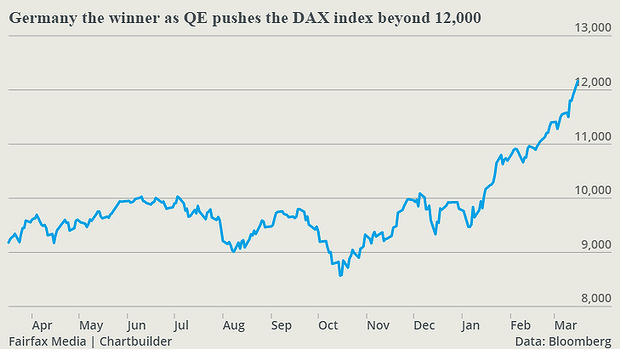Winning Investing Presents How to Find Hot Tech Stocks
Post on: 10 Июль, 2015 No Comment

Validea Snags Tech Prospects
Dear Reader: Unfortunately, Validea is no longer operating
We may not be out of the woods just yet, but few doubt that technology will be the industry with the strongest growth potential when the economy recovers. That doesn’t mean that all tech stocks will go up, and the challenge for investors is to pick the techs with the best prospects.
Validea (www.validea.com ) is a good place to start. Among other services, Validea translates the classic stock selection strategies of respected market scholars such as value investing pioneer Benjamin Graham into computerized formulas that we can apply to our own investing decisions.
They’ve done an admirable job, and you can use Validea’s free Guru Analysis program to tap the thinking of eight market gurus ranging from the aforementioned Graham and former Magellan mutual fund manager Peter Lynch to the likes of number-crunching growth maven and frequent Wall Street Week guest Martin Zweig, or momentum pioneer and Investor’s Business Daily publisher William J. O’Neil.
Gurus and Tech Not!
Validea’s guru’s advice works best when you’re evaluating long established companies such as Home Depot or Merck. Those strategies were honed in a time when it took years for a startup to make a significant impact in its industry.
But things move faster now, especially in the tech sector, and startups seemingly come from nowhere to dominate market sectors that themselves, didn’t even exist five years ago. Most of Validea’s classic guru strategies overlook the newer companies because they lack the required long-term consistent growth history.
Olympic Does Tech
To fill the gap, Validea devised with its own formula, the Olympic Internet strategy, tailored to the new tempo. Validea’s Olympic Internet strategy is misnamed because it covers most tech sectors and isn’t limited to Internet stocks. The Olympic recipe combines elements of classic growth and momentum strategies, but adapts them to the tech sector realities.
The Olympic strategy by itself won’t turn up enough prospects in this market because it looks only at companies with strong recent earnings growth and strong stock price performance, and most techs have stumbled in those categories.
However I’ve found that combining the Olympic strategy with Validea’s interpretation of Peter Lynch’s growth stock strategy turns up an interesting selection of tech prospects.
Mechanics
You can use Validea’s Guru Analysis program two ways: 1) look up any guru’s evaluation of a stock you’re researching, or 2) use the Guru Stock Screener to search out stocks meeting one or more guru’s requirements. We’ll focus on using the screener to find worthwhile tech stock candidates. Get there by selecting Guru Stock Screener from the Stocks dropdown menu.
You can screen for stocks with “strong interest,” or with “some interest” from one or more gurus. “Strong interest” stocks meet all of a particular guru’s requirements, while “some interest” stocks meet most of their requirements.
The Olympic Internet strategy turned up only four “strong interest” candidates when I ran it last week. All may be great prospects, but you need a larger selection to maximize your chances of coming up with worthwhile stocks. I came up with 92 candidates, too many to analyze, when I loosened the requirements by screening for “some interest” Olympic stocks.
Peter Lynch to the Rescue
I found that applying the Peter Lynch Growth Investor “strong interest” requirements to the Olympic Internet “some interest” results (simultaneously search for Olympic Internet “some interest” and Peter Lynch “strong interest”) produced a selection of 16 interesting tech candidates.
Lynch’s growth strategy favors companies with historical annual earnings growth in the 20 percent to 50 percent range. Lynch figures, according to Validea, that growth rates exceeding 50 percent are unsustainable, an assumption that makes sense considering all that has transpired in recent months. Lynch also eliminates companies with negative earnings, high debt, or with inventories increasing faster than sales, all solid rules that wouldn’t garner much argument from fundamentally inclined analysts. However, by itself, Validea’s interpretation of Lynch isn’t a hard enough grader. I faced a list of more than 500 stocks when I searched for Lynch “strong interest” stocks.
But combining the Lynch “strong interest” and Olympic “some interest” searches produced a manageable list of mostly worthwhile tech candidates, the top three being KLA-Tencor (KLAC), Linear Technology (LLTC) and Jabil Circuit (JBL).
What’s interesting is that three of the four Olympic’s “strong interest” stocks didn’t pass muster with Peter Lynch. Both Daktronics (DAKT) and Rudolph Technologies (RTEC) flunked because their historical annual earnings growth rates exceeded 50 percent, which Lynch deemed unsustainable, and software maker EPIQ Systems (EPIQ) was considered overvalued.
One selection turned up by the combined search, salvage vehicle auctioneer Copart, appeared to have been misclassified.
The Peter Lynch search is based on Validea’s computerized interpretation of Lynch’s published strategies, and the real Peter Lynch may not agree with the selections. Also, you should consider the results of any screen as fodder for further research, not as a buy list. Still, the combination of Validea’s Olympic and Peter Lynch strategies, along with your own due diligence, ought to give you a good start when tech stocks recover.
published 5/14/01














